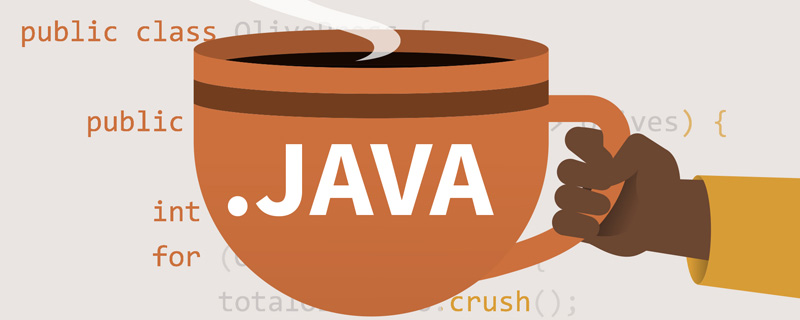Java에서 cmd 명령을 사용하는 방법: 1. 런타임에서 [exec(String command)] 메서드를 사용하여 cmd 명령을 실행합니다. 2. 먼저 실행된 cmd 명령을 파일에 쓴 다음 실행합니다. 실행 오류 로그를 인쇄할 수 있으며 스레드가 중단되지 않습니다.

【관련 학습 권장 사항: java 기본 튜토리얼】
Java에서 cmd 명령을 사용하는 방법:
1 런타임에서 exec(문자열 명령) 메서드를 사용하여 cmd 명령을 실행합니다.
Process p = Runtime.getRuntime().exec(cmd);
이 메서드는 IOException을 발생시키지만 프로젝트에서는 예외가 없으며 명령이 실행되지 않습니다.
2. 이 방법은 대부분의 cmd 호출에서 예상되는 결과를 얻을 수 있지만 때로는 명령이 p.waitFor();에서 중단되어 스레드 차단을 유발합니다
public static boolean runCMD(String cmd) throws IOException, InterruptedException {
final String METHOD_NAME = "runCMD";
Process p = Runtime.getRuntime().exec(cmd);
BufferedReader br = null;
try {
br = new BufferedReader(new InputStreamReader(p.getErrorStream()));
String readLine = br.readLine();
StringBuilder builder = new StringBuilder();
while (readLine != null) {
readLine = br.readLine();
builder.append(readLine);
}
logger.debug(METHOD_NAME + "#readLine: " + builder.toString());
p.waitFor();
int i = p.exitValue();
logger.info(METHOD_NAME + "#exitValue = " + i);
if (i == 0) {
return true;
} else {
return false;
}
} catch (IOException e) {
logger.error(METHOD_NAME + "#ErrMsg=" + e.getMessage());
e.printStackTrace();
throw e;
} finally {
if (br != null) {
br.close();
}
}
}3. 2. 방법 2와 방법 2의 차이점은 획득 스트림이 다르다는 것입니다. getErrorStream을 getInputStream으로 바꾸면 됩니다.
public static boolean runCMD(String cmd) throws IOException, InterruptedException {
final String METHOD_NAME = "runCMD";
// Process p = Runtime.getRuntime().exec("cmd.exe /C " + cmd);
Process p = Runtime.getRuntime().exec(cmd);
BufferedReader br = null;
try {
// br = new BufferedReader(new InputStreamReader(p.getErrorStream()));
br = new BufferedReader(new InputStreamReader(p.getInputStream()));
String readLine = br.readLine();
StringBuilder builder = new StringBuilder();
while (readLine != null) {
readLine = br.readLine();
builder.append(readLine);
}
logger.debug(METHOD_NAME + "#readLine: " + builder.toString());
p.waitFor();
int i = p.exitValue();
logger.info(METHOD_NAME + "#exitValue = " + i);
if (i == 0) {
return true;
} else {
return false;
}
} catch (IOException e) {
logger.error(METHOD_NAME + "#ErrMsg=" + e.getMessage());
e.printStackTrace();
throw e;
} finally {
if (br != null) {
br.close();
}
}
}4. 방법 3의 단점은 실행 오류가 발생할 때 오류 메시지를 인쇄할 수 없다는 것입니다. 또 다른 방법은 실행된 cmd 명령이 먼저 파일에 기록된 다음 실행된다는 의미입니다. 즉, 실행 오류 로그를 인쇄할 수 있으면 스레드가 중단되지 않습니다.
a. 파일에 실행 이름을 씁니다. FileUtils.java
public static boolean writeFile(File exportFile, final String content) {
if (exportFile == null || StringUtils.isEmpty(content)) {
return false;
}
if (!exportFile.exists()) {
try {
exportFile.getParentFile().mkdirs();
exportFile.createNewFile();
} catch (IOException e) {
e.printStackTrace();
logger.error("create local json file exception: " + e.getMessage());
return false;
}
}
BufferedWriter bufferedWriter = null;
try {
FileOutputStream os = new FileOutputStream(exportFile);
FileDescriptor fd = os.getFD();
bufferedWriter = new BufferedWriter(new OutputStreamWriter(os, "UTF-8"));
bufferedWriter.write(content);
//Flush the data from the streams and writes into system buffers
//The data may or may not be written to disk.
bufferedWriter.flush();
//block until the system buffers have been written to disk.
//After this method returns, the data is guaranteed to have
//been written to disk.
fd.sync();
} catch (UnsupportedEncodingException e) {
logger.error("saveDBData#catch an UnsupportedEncodingException (" + e.getMessage() + ")");
return false;
} catch (FileNotFoundException e) {
logger.error("saveDBData#catch an FileNotFoundException (" + e.getMessage() + ")");
return false;
} catch (IOException e) {
logger.error("saveDBData#catch an IOException (" + e.getMessage() + ")");
return false;
} catch (Exception e) {
logger.error("saveDBData#catch an exception (" + e.getMessage() + ")");
return false;
} finally {
try {
if (bufferedWriter != null) {
bufferedWriter.close();
bufferedWriter = null;
}
} catch (IOException e) {
logger.error("writeJsonToFile#catch an exception (" + e.getMessage() + ")");
}
}
return true;
}b. 명령 실행
public static boolean excuteCMDBatFile(String cmd) {
final String METHOD_NAME = "excuteCMDBatFile#";
boolean result = true;
Process p;
File batFile = new File("D:/test/cmd.bat");
System.out.println(batFile.getAbsolutePath());
boolean isSuccess = FileUtils.writeFile(batFile, cmd);
if(!isSuccess) {
logger.error(METHOD_NAME + "write cmd to File failed.");
return false;
}
String batFilePath = "\"" + MigrateContants.CMD_BAT_FILE + "\"";
logger.info("cmd path:" + batFilePath);
try {
p = Runtime.getRuntime().exec(batFilePath);
InputStream fis = p.getErrorStream();//p.getInputStream();
InputStreamReader isr = new InputStreamReader(fis, System.getProperty("file.encoding"));
BufferedReader br = new BufferedReader(isr);
String line = null;
StringBuilder builder = new StringBuilder();
while ((line = br.readLine()) != null) {
builder.append(line);
}
p.waitFor();
int i = p.exitValue();
logger.info(METHOD_NAME + "exitValue = " + i);
if (i != 0) {
result = false;
logger.error(METHOD_NAME + "excute cmd failed, [result = " + result + ", error message = " + builder.toString() + "]");
System.out.println(METHOD_NAME + "excute cmd failed, [result = " + result + ", error message = " + builder.toString() + "]");
}else {
// logger.debug(METHOD_NAME + "excute cmd result = " + result);
System.out.println(METHOD_NAME + "result = " + result);
}
} catch (Exception e) {
result = false;
e.printStackTrace();
logger.error(METHOD_NAME + "fail to excute bat File [ErrMsg=" + e.getMessage() + "]");
}
return result;
}관련 학습 권장 사항: 프로그래밍 비디오
위 내용은 Java에서 cmd 명령을 사용하는 방법의 상세 내용입니다. 자세한 내용은 PHP 중국어 웹사이트의 기타 관련 기사를 참조하세요!